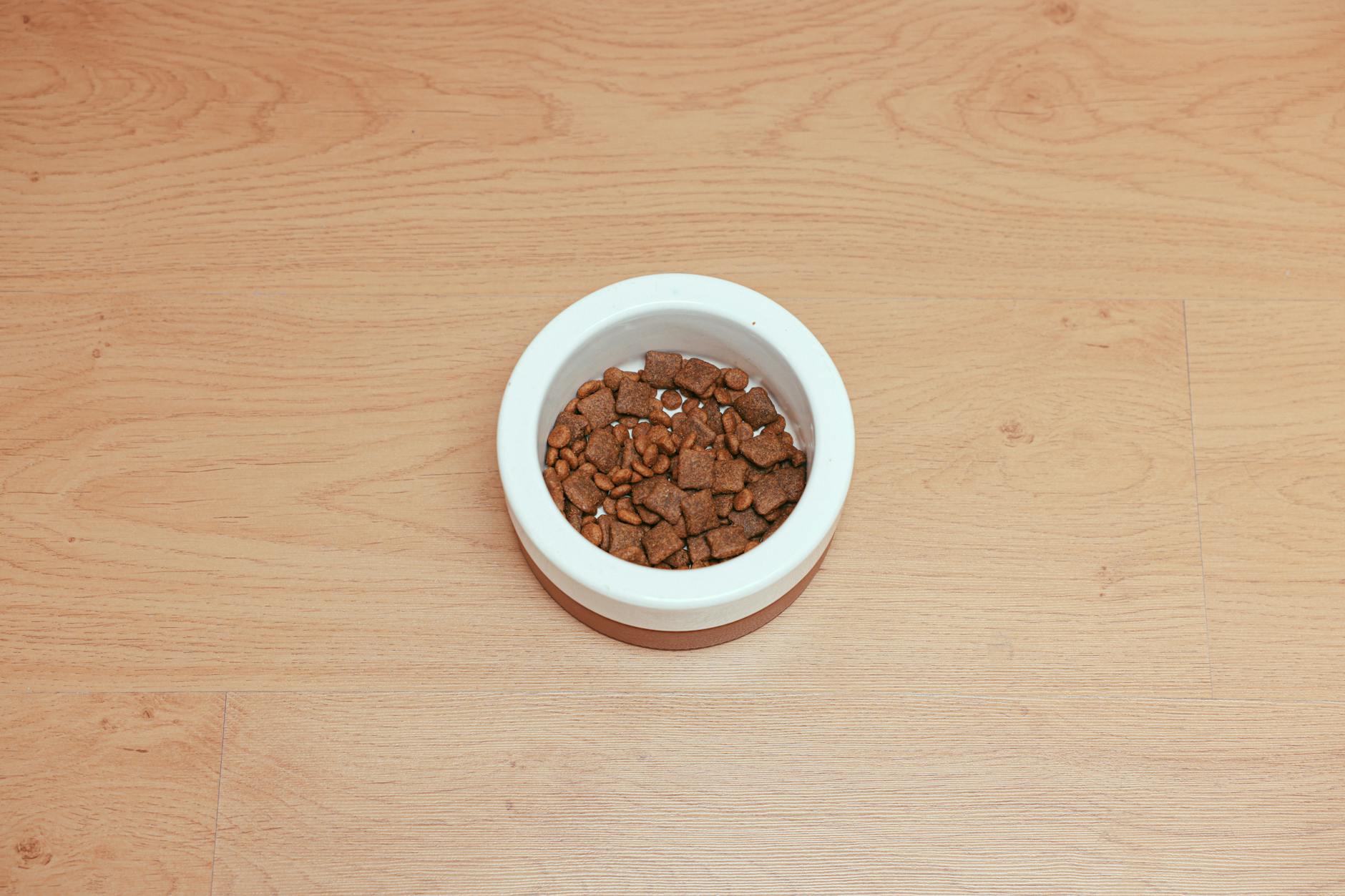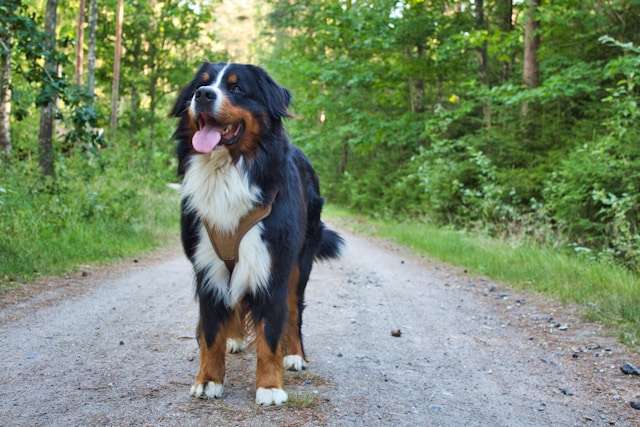How to Create a Dog Feeding Schedule That Works for Your Busy Life

How to Create a Dog Feeding Schedule. Finding the proper feeding schedule for your dog isn’t just about convenience—it’s about improving their overall well-being. A thoughtful plan helps maintain healthy digestion, balances energy levels, and prevents behavioral issues like begging or overeating.
Whether navigating a busy routine or adjusting for dietary needs, creating a schedule that aligns with your dog’s lifestyle is key. For guidance on feeding large breed dogs or managing dogs with special diet needs, there’s a strategy that works for every pet and owner dynamic.
Understanding Your Dog’s Nutritional Needs
A well-balanced diet tailored to your dog’s unique requirements lays the foundation for a healthy and active life. Each pup has individual needs based on various factors that influence their nutrition. Let’s break these down to help you ensure your dog gets the care they deserve.
Factors Influencing Nutritional Needs
Every dog is different, and their diet should reflect their personal needs. Here are the main factors to consider:
- Age: Puppies require diets rich in protein and fat to support growth. Adult dogs benefit from balanced maintenance diets, while seniors may need lower calorie intake to avoid weight gain.
- Weight: Overweight dogs may require low-calorie, high-fiber meals to shed pounds, while underweight dogs may need energy-dense foods.
- Breed: Large breeds like Golden Retrievers or German Shepherds often need joint-supporting nutrients, such as glucosamine, while smaller breeds benefit from calorie-packed diets in smaller portions.
- Health Conditions: Special dietary considerations are necessary if your dog has diabetes, allergies, or digestive issues. Dog food recommendations for health-related needs provide tailored approaches based on specific concerns.
Properly assessing your dog’s unique requirements ensures they get the nutrition that aligns with their lifestyle and health.
Understanding Dog Food Labels
Dog food aisles can feel overwhelming, filled with buzzwords like “premium” or “natural.” Knowing how to read labels can simplify your choices. Here’s what to look out for:
- Ingredient List: The first few items are the most abundant. Look for high-quality protein sources like chicken or beef.
- Guaranteed Analysis: This section breaks down essential nutrients. Aim for the recommended levels of protein, fats, and fiber-based on your dog’s age and activity level.
- AAFCO Statement: The Association of American Feed Control Officials (AAFCO) measures if the food is complete and balanced for a specific life stage. Always choose food that meets AAFCO standards. For more on feeding essentials, visit Nutrition Tips for Dogs.
Attention to these details helps you choose products that align with your pup’s nutritional needs.

Photo by MART PRODUCTION
Consulting with a Veterinarian
Even the most informed pet parents need expert advice sometimes. A veterinarian can provide crucial insight into your dog’s health based on observation and tests. They’ll help:
- Evaluate any specific dietary needs or restrictions.
- Address health concerns like allergies or sensitivities.
- Recommend portion sizes and feeding frequencies based on age, weight, and activity level.
For general guidelines on feeding practices, you can also explore these recommendations from VCA Hospitals.
You can build a diet plan that truly supports your dog’s needs by consulting a vet and staying informed about ingredients and specific requirements.
Creating a Suitable Feeding Schedule
Establishing a feeding schedule ensures your dog gets the nutrition they need while promoting consistent digestion and behavior. A thoughtful routine tailored to your dog’s activity levels, age, and lifestyle can make your life easier. Here’s how to create one that works.
Assessing Daily Activity Levels
How active is your dog throughout the day? Their energy levels dictate how often and how much they should eat. Highly active dogs, like those involved in agility or hunting, might need more frequent meals or calorie-dense food. On the other hand, a laid-back lap dog will require far fewer calories.
- Observe their playtime habits, how long they stay active, and the intensity of activities.
- Note any weight changes indicating that you’re over or underfeeding.
- Use tools like a dog body condition score chart to assess your pet’s physical condition.
Matching meal portions and frequency to activity will help maintain your dog’s energy without encouraging weight gain.
Setting Consistent Meal Times
Dogs thrive on routine, and consistent meal times can improve their digestion and curb bad habits like begging or scavenging. Feed your dog at the exact times each day, spacing meals evenly. This helps their internal clock adjust, making digestion more efficient.
- Choose meal times that align with your daily schedule. For example, before work and again during dinner time.
- Avoid free-feeding unless it’s medically advised, as this can lead to overeating.
- Morning and evening feedings 8-12 hours apart are ideal for most adult dogs. Learn why this consistency matters.
A steady schedule reinforces good eating behavior and helps them anticipate when to eat.
Adjusting Portions Based on Lifestyle
Not every dog needs the same amount of food—even within the same breed or size group. Portion sizes should change depending on your dog’s lifestyle, age, and energy output. Puppies and senior dogs will have different calorie demands compared to adult dogs.
- Increase portions for working dogs or breeds with higher metabolism.
- Decrease meal sizes if your dog is gaining unnecessary weight or slowing down with age. For example, senior Boxers might need smaller portions as their activity levels decline.
- Regularly review your dog’s feeding guidelines and adapt to seasonal activity shifts.
Pay attention to how your dog reacts to portion changes. You may need to tweak it if they are overly hungry, tired, or restless.
Developing a Routine for Puppies vs. Adults
Puppies and adult dogs have vastly different nutritional needs, and their feeding schedules should reflect this.
Puppies:
- Require 3-4 small meals daily to meet their growth demands.
- Their metabolic rate is higher, so spacing out meals prevents crashes in energy.
- Stick to age-specific feeding advice like this puppy feeding schedule.
Adult Dogs:
- Can thrive on two meals a day, morning and evening.
- Feeding at regular times reinforces routine and supports better digestion.
Keep in mind that transitioning between these stages should be gradual to prevent digestive upsets.

Photo by Cup of Couple
Building a schedule tailored to your dog’s phase of life sets them up for success, whether they’re learning to be a puppy or living a laid-back adult life. Consistency is the secret ingredient for a lifelong, happy, and healthy eater.
FAQ for Dog Feeding Schedules
Every dog owner has questions about feeding schedules—there’s no one-size-fits-all answer. Addressing common questions can clarify what works best for your furry friend. Here are frequently asked questions and answers on the topic.
How Often Should I Feed My Dog?
The frequency of meals depends on your dog’s age, size, and activity level. Puppies typically need 3-4 meals daily, while adults thrive on two meals daily, one in the morning and one in the evening. You can read about feeding times and frequency for a more structured overview.
If your pup has special needs or a health condition, consult your veterinarian before deciding on a schedule.
Should I Free-Feed My Dog?
Free feeding, where food is left out all day, can lead to overeating and weight gain in most adult dogs. While it offers flexibility for busy owners, it’s not ideal for managing portion control. However, this might be a viable option for exceptional cases, such as nursing dogs or underweight pups. Learn more about the pros and cons of free-feeding here.
In most cases, a scheduled feeding routine is safer and healthier.

Photo by cottonbro studio
What Time Should I Feed My Dog?
Consistency is key. Feeding your dog at the same time daily helps their digestion and energy regulation. A simple routine, like breakfast at 7 AM and dinner at 6 PM, works for most dogs. It’s also beneficial to wait a few hours after meals before engaging in physical activity to reduce health risks like bloat, especially in larger breeds. If you’d like to dive deeper into creating structured feeding times, visit Dog Feeding Time: How Much and How Often?
How Do I Adjust My Dog’s Portions?
Please start with the feeding guidelines on your dog food packaging, as they’re often tailored based on weight and activity level. Adjust portions gradually to suit your dog’s needs:
- Active Dogs: Require slightly larger portions to replenish energy.
- Sedentary Dogs: Benefit from smaller, lower-calorie meals to avoid weight gain.
- Senior Dogs: Typically need fewer calories unless battling weight loss.
If you notice changes in weight or energy, it’s time to reassess. For more tips, explore managing special dietary needs.
Can Dogs Eat Immediately Before or After Exercise?
No. Allow a window of 1-2 hours before or after intense activity to prevent gastric health problems. Large or deep-chested breeds are at higher risk for issues like bloat if they eat too close to exercise.
Managing meal timing prevents discomfort and ensures your dog performs best during play or walks.
What Should I Do If My Dog Eats Too Fast?
Fast eaters can face digestion issues or even life-threatening conditions like choking or bloat. To slow them down:
- Use a slow feeder bowl.
- Spread food across a flat surface.
- Split meals into smaller portions throughout the day.
For further advice on such concerns, articles like Useful Tips for a Proper Dog Feeding Schedule outline a slow and scheduled feeding format.
Answering these FAQs can eliminate much of the guesswork when creating a feeding plan suited to your dog’s health and happiness. Stay tuned for more tips in upcoming sections!
Special Considerations for Different Dogs
Every dog is unique, and their feeding schedule should reflect their specific needs. Adjusting for size, breed, and health conditions can significantly affect their overall well-being. Let’s break down special considerations, starting with large breed dogs.
Feeding Large Breed Dogs
Creating a feeding schedule for large breed dogs like Great Danes or Bernese Mountain Dogs involves more than just bigger portions. These breeds have specific nutritional needs rooted in their size and activity levels.
- Portion Control: Overfeeding can cause rapid growth in puppies, increasing their risk of joint issues such as hip dysplasia. Stick to recommended portion sizes based on their weight and age. Learn more about nutrition tips for large breeds.
- Meal Frequency: Instead of feeding one large meal daily, aim for two balanced meals. This prevents overeating and reduces the risk of bloat, a common and potentially life-threatening condition in large breeds.
- Nutrient Focus:
- Protein: Necessary for muscle development but should not exceed the recommended levels to avoid straining their kidneys.
- Calcium and Phosphorus: Essential for bone health, especially in growing puppies. However, excess calcium can cause skeletal abnormalities.
- Limited Calories: Large breeds burn fewer calories per pound than smaller dogs despite their size. Overfeeding can easily lead to obesity.
For additional insights on meeting the specific requirements of large breeds, check out these detailed nutritional considerations.

Photo by Kaboompics.com
The right approach to feeding large-breed dogs can help them live healthier, happier lives and avoid many common health issues tied to improper diets. Modify their feeding routines based on their life’s stage, activity, and health conditions. Keep reading for more tailored solutions for your furry friend.







One Comment